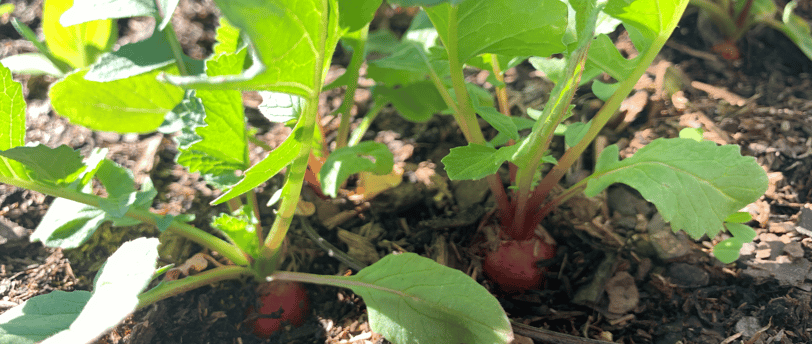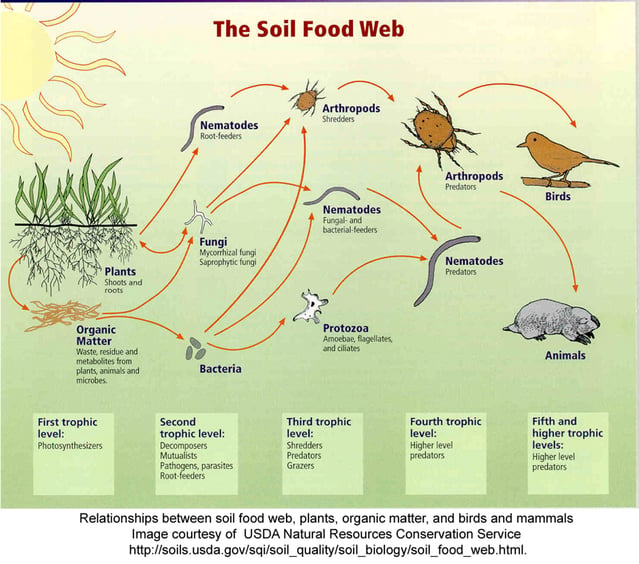Mulch: Covering Your Soil
Why mulch, an in-depth guide on why it's important to cover your soil.
Kylie Treekin
12/12/20243 min read


Did you know that globally, there is more water retained in our soils than there is in all of our freshwater rivers, streams, and lakes combined?!
What does this mean for how we think about our soils?
With the current large-scale method of mono cropped farming, worldwide we are losing inches of soil to erosion, overgrazing, and use of heavy chemicals that destroy soil life. Essentially, the solution to combating this is the exact opposite methodology that got us here in the first place. By covering our soils with plants and mulch, it makes a huge life-flourishing difference for the bacteria and microbes that can be found here.
When we have life in our soils, that healthy soil transfers into healthy plants that are nutritious and full of all the vitamins and minerals you would expect those plants to have. When our soils are barren of life, the nutritional value also suffers along with the flavor.
One of the easiest and best ways to add a nutritious, dense mulch layer to your yard is to utilize your Fall leaves! You might have heard @blackforager Alexis Nikole on IG talk about Leaving the Leaves, she is absolutely right! Leaving the leaves is not only an absolutely free resource, it adds so much to the soil, with little to no effort.
Top Benefits of Mulching Soil
Increased Watering Efficiency
By adding woody mulch to your ecosystem that is at least 1-3 inches thick, you instantly create a water-absorbing area on top of the soil that slows down the water, captures it within the tiny wooden particles, and releases it slowly. This is especially beneficial in really hot and dry climates and is one of the first solutions I always recommend to clients during landscaping consultations.
Increased Soil Microbiology and Life
When the soil is covered and better able to retain moisture, this is the perfect environment for beneficial bacteria to thrive, including preserving the integrity of any fertilizers or compost you might spread. Once the sun can directly hit the soil, the moisture is zapped and the microbes die along with it.
Protection of Plant Roots
When harsh weather strikes, be it blazing heat or freezing temperatures, the tried and true way to help prevent shock as well as give that plant a fighting chance to grow back from the roots if the top dies... is you guess it... Mulch! The thicker the mulch, the better protection it will provide by literally creating a layer between the weather and the direct soil. I will even preemptively clear and mulch plants (we call this chop and drop as the plant matter goes under the mulch) when bad weather is coming.
Provides Decomposers with Food
A lot of times when we follow traditional farming methods of removing all foreign bodies from our gardens, we also unintentionally remove the food source for parts of the soil food web. That means, things like decomposers, who have nothing else to eat, might go for your nice delicious garden produce instead of munching on the mulch, leaves, and compost that they would normally have access to. When we take all parts of the soil food web into consideration and "feed them" the biome as a whole will be supported and healthy which means far fewer pests and diseases in our plants.
Provides Over-Winter Habitat
With species we all know and love getting closer to the endangered list like the Monarch Butterfly, leaving a mulch layer could be potentially life-saving for them! All sorts of butterflies, moths, geckos and other critters that are all a part of larger ecosystems use mulch to lay dormant until Spring comes. So many little guys will be grateful!


Utilizing mulch is one of the easiest ways for humans to affect positive change and move the dial from "humans can only be destructive" to "humans can create an incredible impact" and that human is you!
Thanks for reading and I hope you are encouraged to look at your soil and mulch a little differently. Happy Growing!
Have you seen the soil food web before?
Image curtesy of the USDA.


